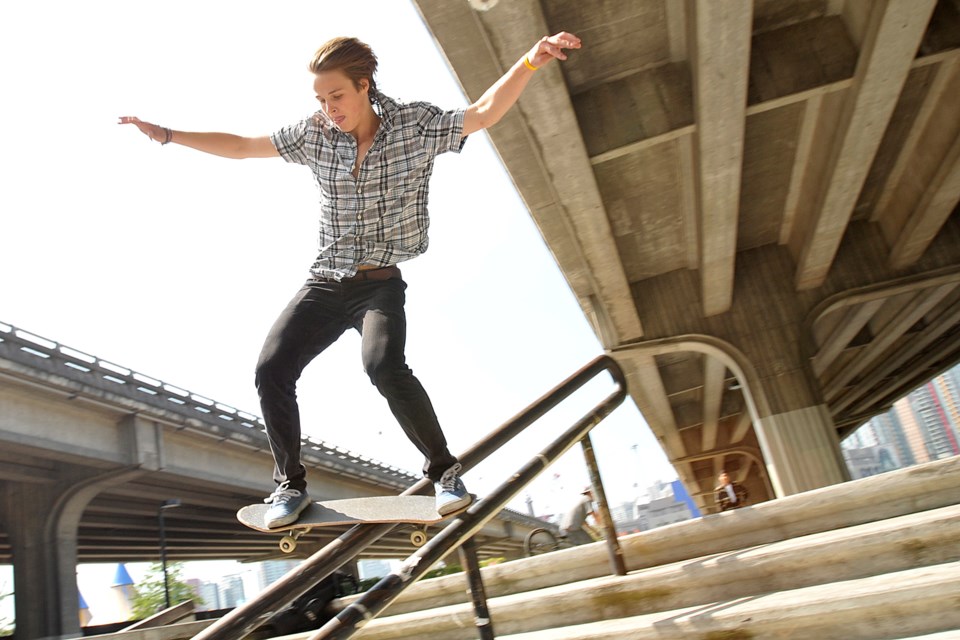Skateboarders and rollerbladers could soon be legally allowed to skate in the city’s protected bike lanes that run from Kitsilano to Chinatown and through parts of the West End.
But the Vancouver Police Department is warning that the city’s proposal to mix skateboarders and cyclists in the lanes might not be such a good idea.
“Skateboarders sharing bike lanes may cause an increase in conflict between cyclists and skateboarders,” said a statement from the VPD included in a city staff report that goes before council Dec. 10. “As well, the handling, maneuverability, varied speeds and perhaps most significantly, the braking characteristics of skateboards, are much different than bicycles.”
Police say conflicts could result in more calls to sort out disputes involving skateboarders, cyclists, pedestrians and motorists. Also, there may be serious potential for an increase in accidents where someone is injured, police said.Though police only commented on skateboards and acknowledge some skateboarders already use the lanes, the city’s proposal also calls for opening up the cycling network to rollerbladers and push-scooter users.
City staff wants city council to proceed with a trial for one year. The rationale is that conflicts would be reduced on sidewalks, particularly between skateboarders and pedestrians. The lanes, which are protected from vehicle traffic by barriers such as planters and curbs, would also provide protection for skateboarders, said the report, noting the trial would further encourage and legitimize skateboarding as a popular form of transportation. The trial would not extend to painted bike lanes.
The use of skateboards, rollerblades and push scooters are currently only permitted on minor streets. Council adopted those restrictions in 2001.
“Staff now feel that the nature of skateboarding has changed, with different types of skateboards being used not just for recreation, but as a way to get around the city,” said the report, noting the protected lanes are wide enough for cyclists to pass skateboarders.
The report says the move to proceed with a trial was done in consultation with the VPD, Insurance Corporation of B.C., the HUB cycling coalition, Vancouver Skateboard Coalition, Vancouver Coastal Health and Road Safety B.C.
Michelle Pezel, vice-president of the Vancouver Skateboard Coalition, said she hasn’t reviewed city staff’s proposal and therefore couldn’t give a proper response on whether members supported the trial.
“We definitely support the expansion and legalization of skateboarding in Vancouver,” said Pezel, who owns Antisocial Skateshop on Main Street. “But skateboarding is really a lot more than transportation. Skateboarding is a culture and skateboarding has a history and not everybody who skateboards, skateboards the same.”
Erin O’Melinn, executive director of the HUB cycling coalition, said her organization is “generally supportive” of the move to allow skateboarders to ride legally in the protected lanes.
O’Melinn said HUB has made it clear to city staff that monitoring should be done to ensure skateboarders are using the lanes solely for transportation and not for tricks.
“If people are actually using different modes [of transportation] to get to places, that’s great – and hopefully there will be some messaging out there about being considerate and moving in as straight a line as possible,” she said. “Things that you would do in a skate park are a different set of activities than we’re hoping to see in the bike lanes.”
Staff’s proposal also calls for lighting and reflective gear to be worn at night by skateboarders, rollerbladers and push-scooter users. All are already required to wear a helmet.
mhowell@vancourier.com
@Howellings



